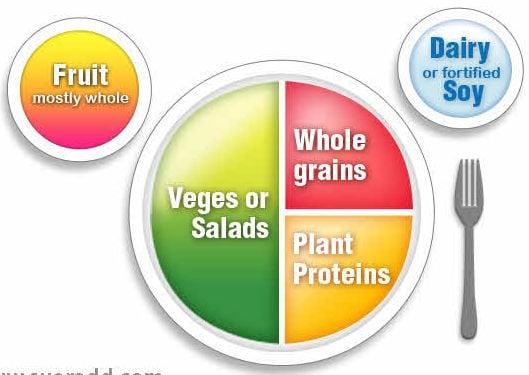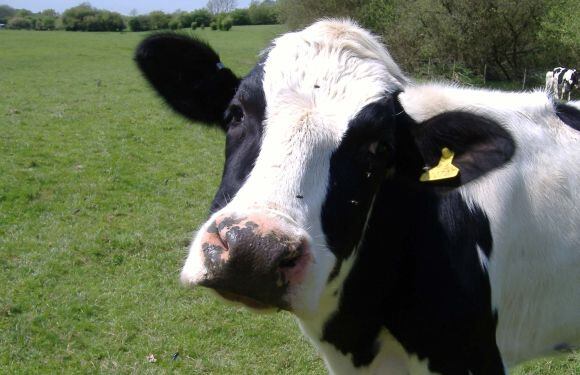Its comments came as the DGAC - a panel of experts tasked with developing recommendations about what Americans should eat – submitted its report to the U.S. Departments of Health and Human Services (HHS) and Agriculture (USDA), which will publish the 2015 Dietary Guidelines for Americans later this year.
You can read the full report HERE, which said that “a healthy dietary pattern is higher in vegetables, fruits, whole grains, low- or non-fat dairy, seafood, legumes, and nuts; moderate in alcohol... lower in red and processed meats; and low in sugar-sweetened foods and drinks and refined grains."
While it acknowledged that “lean meats can be a part of a healthy dietary pattern” and were an excellent source of Heme iron, the DGAC also noted that the “major findings regarding sustainable diets were that a diet higher in plant-based foods, such as vegetables, fruits, whole grains, legumes, nuts, and seeds, and lower in calories and animal-based foods is more health promoting and is associated with less environmental impact than is the current U.S. diet.”
DGAC’s ‘foray into the murky waters of sustainability is well beyond its scope and expertise’
However, NAMI president and CEO Barry Carpenter said it was “unfortunate” that the DGAC was “generalizing about an entire category of foods”.
Meanwhile, he said, the DGAC’s ”foray into the murky waters of sustainability is well beyond its scope and expertise”, and did not consider recent research that factored in the nutritional contribution that animal products make when considering their environmental impact.

For example, while the carbon footprint of producing 10 pounds of rice might be lower than that of producing 10 pounds of beef, the two did not deliver an equal amount of nutrients, he said.
“Instead of analyzing the carbon footprint on similar equal amounts of different foods, researchers suggested that the total nutrition provided by those equal amounts must also be considered. Ten pounds of beef or pork provide more complete nutrition when consumed than 10 pounds of rice or broccoli.”
The committee’s contradictory advice to reduce processed meats is nonsensical
And when it came to health and nutrition, meanwhile, NAMI appreciated the DGAC's reference to lean meat’s role in a healthy diet, said Carpenter, but said its “relegation to a footnote ignores the countless studies and data that the Committee reviewed for the last two years that showed unequivocally that meat and poultry are among the most nutrient dense foods available”.

He added: “The Committee’s contradictory advice to reduce processed meats is also nonsensical, especially given data the committee reviewed about the Mediterranean diet. Followers of the Mediterranean diet – the diet hailed by so many for its good nutrition and health outcomes – consume twice as many processed meats as included in the USDA’s food patterns.”
Meat and poultry products are “nutrient dense foods that satisfy hunger and help control weight and are an excellent source of iron, a nutrient of concern specifically highlighted by the DGAC”, he noted.
“Processing meat and poultry so that it can be more readily consumed – and consumed in styles and flavor profiles that people around the world savor – helps ensure that people can make these products part of their healthy balanced diet."
DGAC: We should move to dietary patterns that involve more plant-based foods and lower amounts of meat
So what data did the DGAC look at in order to arrive at its conclusions abut the environmental impact of diets lower in animal products?
According to its report, the DGAC considered 15 studies - "primarily of dietary pattern modeling studies that assessed related environmental outcomes" that were conducted between the 2003 and 2014 in the US, the UK, Germany, the Netherlands, France, Spain, Italy, Australia, Brazil, and New Zealand (click HERE).

And it found that: "A moderate to strong evidence base supports recommendations that the U.S. population move toward dietary patterns that generally increase consumption of vegetables, fruits, whole grains, legumes, nuts and seeds, while decreasing total calories and some animal-based foods. This can be achieved through a variety of dietary patterns, including the Healthy USDA-style Pattern, the Healthy Vegetarian Pattern, and the Healthy Mediterranean-style Pattern.
"Each of these patterns provides more plant-based foods and lower amounts of meat than are currently consumed by the U.S. population."
Consumption of dairy foods provides numerous health benefits
The National Dairy Council, meanwhile, was far more positive about the report, which did not single out dairy in its sustainability section, and advised Americans to increase intakes of low-fat/fat-free fluid milk and yogurt and replace soft drinks and other sugar-sweetened beverages with non-fat fluid milk to increase intakes of shortfall nutrients including calcium, vitamin D, and magnesium. However, it did advise a switch to cheeses containing less sodium and saturated fat.

The National Dairy Council's Executive Vice President of Research, Regulatory and Scientific Affairs Dr Greg Miller told FoodNavigator-USA: "Milk is the number one source of nine essential nutrients in the diets of America’s children – including calcium, vitamin D, and potassium, three of the four nutrients the 2015 DGAC found to be under-consumed... Dairy foods’ nutrient package can be hard to replace with other foods.
"Overall the DGAC acknowledged dairy’s health benefits by stating that 'Consumption of dairy foods provides numerous health benefits including lower risk of diabetes, metabolic syndrome, cardiovascular disease and obesity.' "
CSPI: Meat recommendations should make it to final report
Lawrence Williams, Chairman of the United States Healthful Food Council, was among the first to welcome the report, adding: "Consuming more whole, plant-based foods and less meat is essential for the health of people as well as the planet.”
Sharon Palmer, RDN - editor of Environmental Nutrition and author of Plant-Powered for Life - told FoodNavigator-USA: "I am very pleased with this set of guidelines, which offers a contemporary look at eating patterns that promote human health as well as the health of the planet. Interestingly, the committee took an indepth look at saturated fats, which have been very controversial recently. They came out in support of reducing saturated fats to no more than 10% of total calories. Certainly, the recent science on saturated fats has been intriguing, but the Committee looked at the full body of evidence, rather than a few isolated studies."
The Center for Science in the Public Interest (CSPI) also praised the DGAC's decision to factor in sustainability criteria into its recommendations, adding: "The recommendation to eat less red and processed meat deserves to be in the final Dietary Guidelines for Americans—and not excised at the behest of the meat industry."
Click HERE to see more data on the health and environmental impacts of different dietary patterns that was presented at the International Congress on Vegetarian Nutrition in 2013.
Read the key recommendations of the DGAC's report HERE and click HERE to see what the beverage industry thinks about it.
Read the full report HERE.
